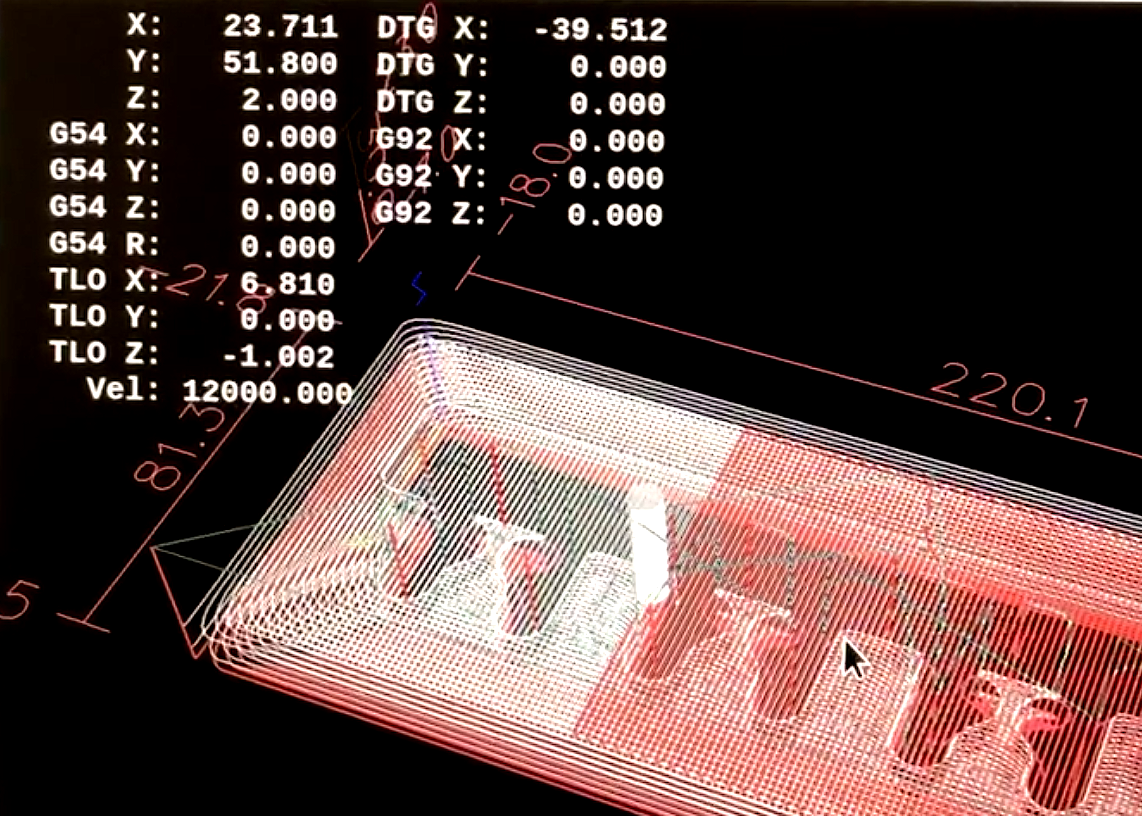In addition to our existing machine controller, which uses an arm64 SoC for the host processor, we are developing a new controller architecture that retains the old design and layout but changes the host processor SoC and its periphals.
The reason for this upgrade to be necessary is for the regular inclusion of CAD/CAM on the machine controller itself and better display support. The existing controller already supports 4k60 monitors, but its graphics processor is very much at its limit for the display resolution and 3D rendering that is needed.
The new SoC will be an amd64 architecture design with a – for integrated graphics standards – powerful graphics processor that is many times faster than the current SoC when it comes to rasterizing performance – that is important for 3D rendering in CAD – and also supports much newer video encoding and decoding standards in hardware, like VP9, which means that things like high-resolution YouTube video playback are possible with it.
In addition to that there are also a number of benefits to this new architecture in terms of connectivity: It supports 2.5G ethernet, 5G/10G USB, higher memory capacity, faster memory, more PCIe lanes for NVMe or graphics cards et cetera. Now, as one might imagine this large uplift in a number of metrics does not come cheap. But not only the new chip itself, but also because of intrinsic attributes, such as faster memory, which means more support chips are needed. So this new controller will see a slight price increase.
Now, if you are in this industry you probably ask yourself about the alternatives, and there is one elephant in the room and it is called: RISCV. Of course, this is very intriguing because of their open ISA nature. These chips just start to exist for people who do not just buy IP and roll their own custom ASICs – like Western Digital or Microsemi – so to speak mere mortals like us. The CPU performance for the latest Sifive in-order-core SOCs is not great in terms of desktop processors, but very impressive for it is a clean-slate new design in the embedded world where area and power is very important.
For us, the CPU performance was deemed acceptable but the downside is that these SOCs do not include any integrated graphics processor. Which in turn means that we need to provide an external graphics processor: An AMD GPU because it has an opern driver stack. But here comes the catch with that, its not the added price and complexity of a GPU, no, it is the necessity to port amdgpu to the RISCV platform along with a lot of other software, like bootloader, kernel, PREEMPT_RT, chromium and many more. We have already done that – twice – and it was not that funny. Once for amd64 and once for arm64 and its really not worth the effort when the amd64 platform has everything in a one-chip solution with all software already running.
And this is also in respect the customer, you, who would need to pay for all that extra effort, upfront and with every controller. And lastly, in respect of the people who need to write software, write schematics, read thousands of pages of documentation of memory regions and lay out printed circuit boards.
We can do all that, sure, but at this point we should remind ourselves that there are companies that only do that – port existing software and products to a new platform. On the other hand there also is a machine tool to build in front of that controller as well because we do not just sell controllers, and we would rather like to focus on improving that instead of endlessly porting software without adding any benefit.
Wether this new controller architecture will replace the existing one or not is not yet clear. Currently it is planned to have both controllers available, with the new controller assuming a new position for advanced requirements.
Tell us what you think!
jm
